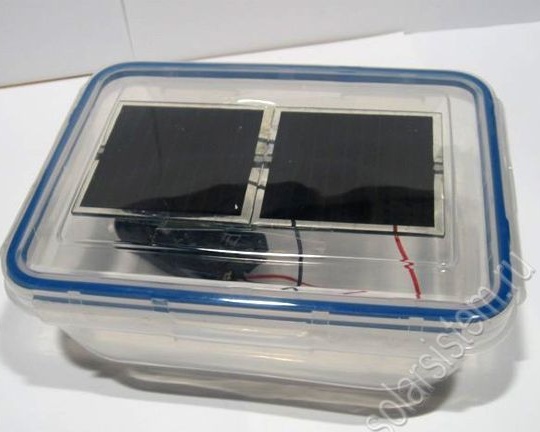
This charger for finger batteries is distinguished by its unusual simplicity and ease of assembly. It is based on the use of solar panels, due to which the batteries are charged. A similar system can be assembled in just half an hour with the necessary materials available.
Materials used by the author to create this charger:
1) a transparent plastic container that will serve as the body of the device
2) solar cell with a voltage of 4-5 V
3) holder for AA or AAA batteries
4) Schottky diode
5) soldering iron
6) silicone glue
Consider the stages of creation and the basic structural elements of this charger on solar panels.
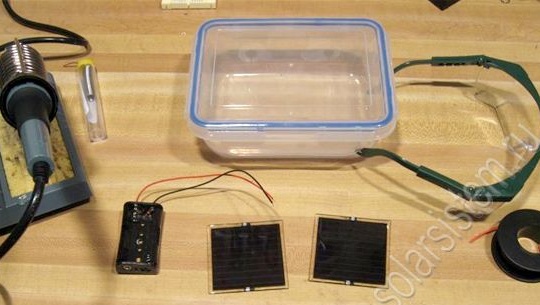
Before starting work, it is important to understand some of the essential features of this model of charger. Since there is no controller in his circuit, the batteries must be charged with a current not exceeding 10% of the total capacity of the battery itself. Otherwise, the battery may simply overheat and become unusable.
The author decided to use batteries with a total capacity of 2000 mAh, which means that the solar cell should generate a current of no more than 200 mA.
Since the author had only two solar cells, each of which can generate a current of 80 mA, he decided to connect them in parallel, thereby increasing the current and, accordingly, the charging speed of the batteries. If you use only one such element, the charger will also work, but the charging process will take quite a while, so the author took such measures for the most part only to speed up battery charging.
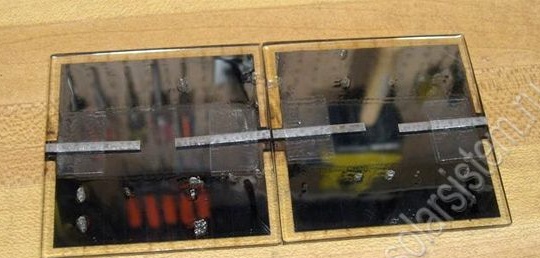
After preparing the solar cells, the author proceeded to work with a soldering iron. To begin with, he soldered the Schottky diode to one of the conclusions, if you can not find a similar diode, then the author recommends using its analog KD521A.
The diode itself is needed so that when the solar cells are darkened and do not generate electricity to charge the batteries, the batteries themselves are not discharged through these solar panels. That is, the diode blocks the possibility of discharging the batteries through the solar cells, which saves the battery charge level and protects the solar batteries from overheating. The author also notes that it is very important to observe the polarity when installing the diode, otherwise the circuit may be damaged.
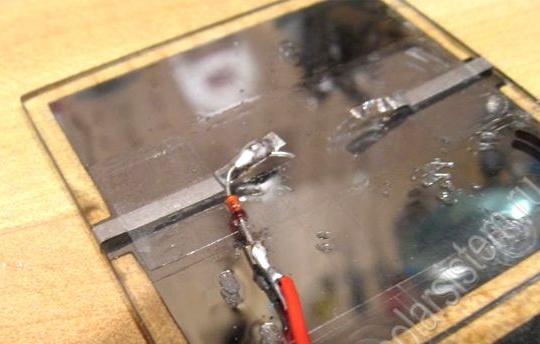
After all work on the solar cells has been carried out, it remains only to solder them to the battery holders, and then fix the entire charger design in a convenient package.
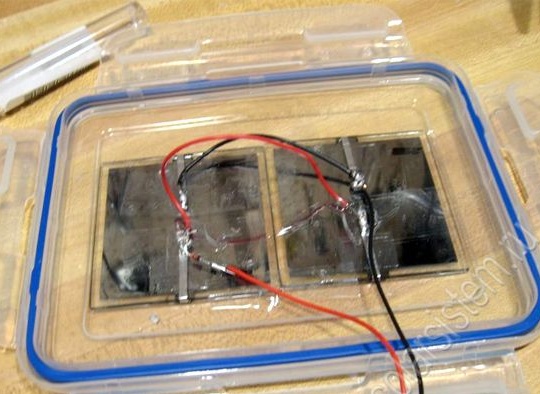
The author chose an ordinary plastic container as a package for his charger. The panels were placed inside the container, as the container lid is transparent. To fix the solar cells on the lid of the container, the author used silicone glue. Thus, the entire system is located inside the container and is protected from external weather conditions, scratches and other things.

After installing discharged batteries in the holders, the device will be ready for use. The main disadvantage of this device is that the device itself does not have a charging controller in its circuit, so it is impossible to control the charging process. However, according to the author’s calculations, the total battery charging time is about 16 hours.
